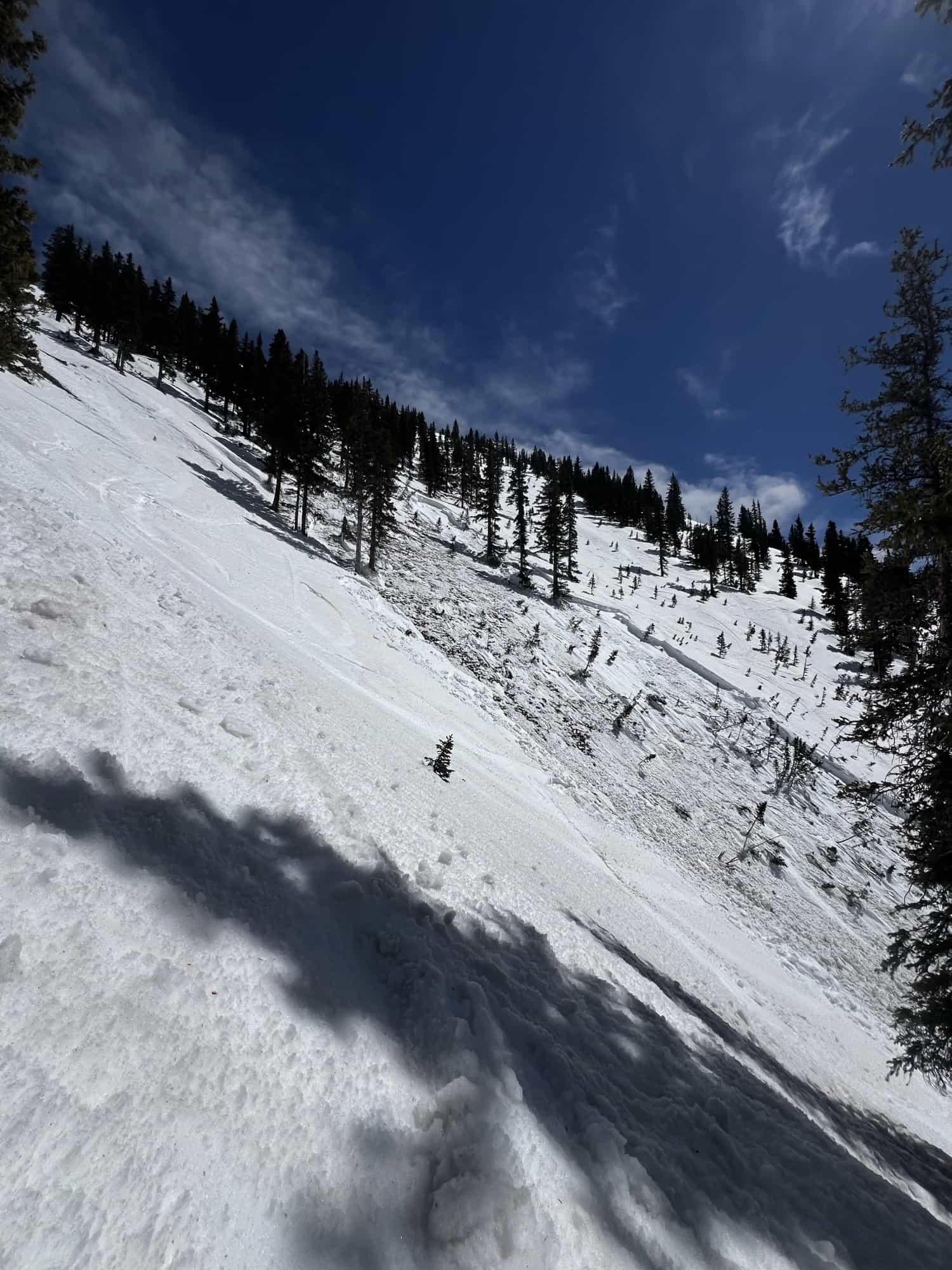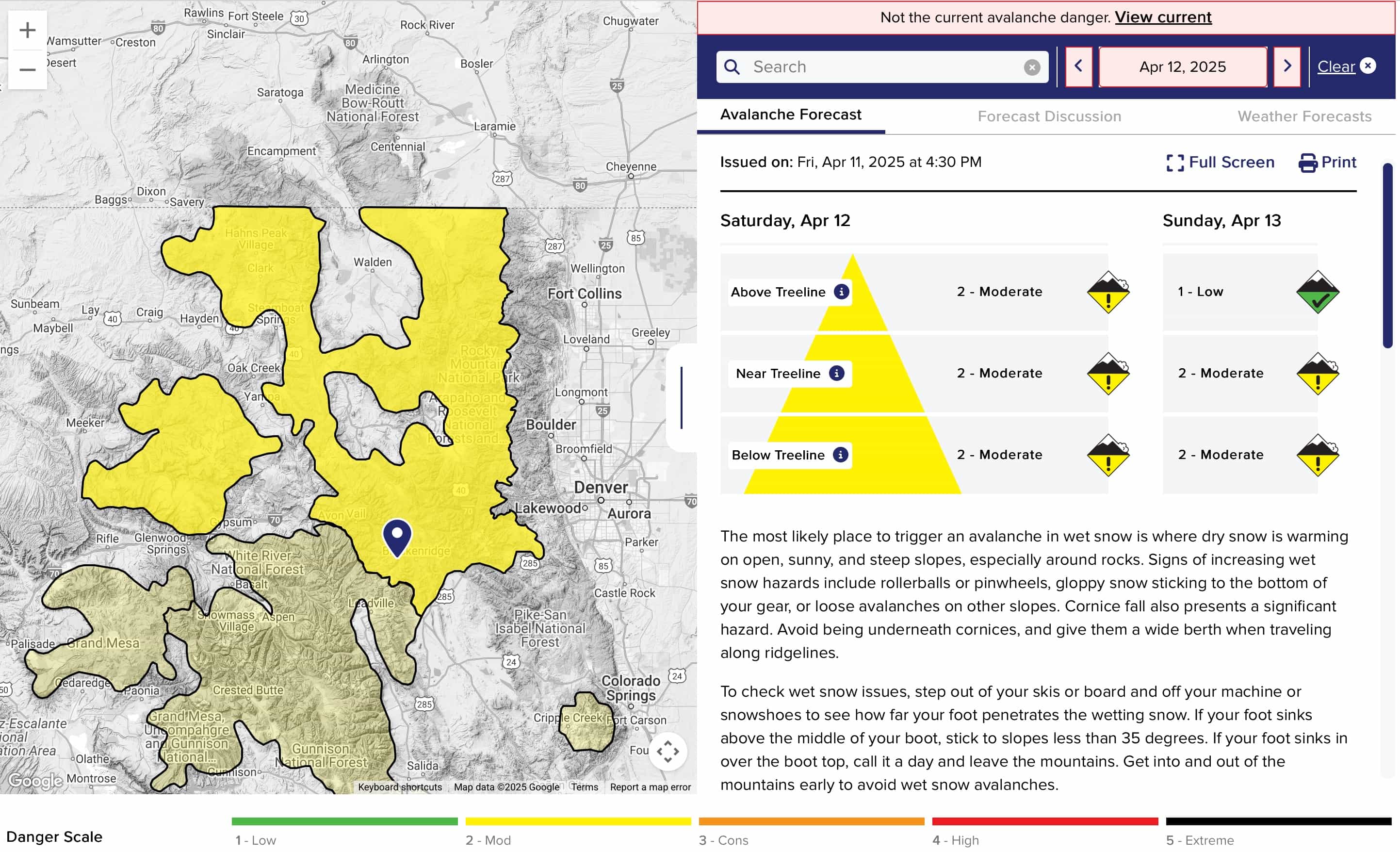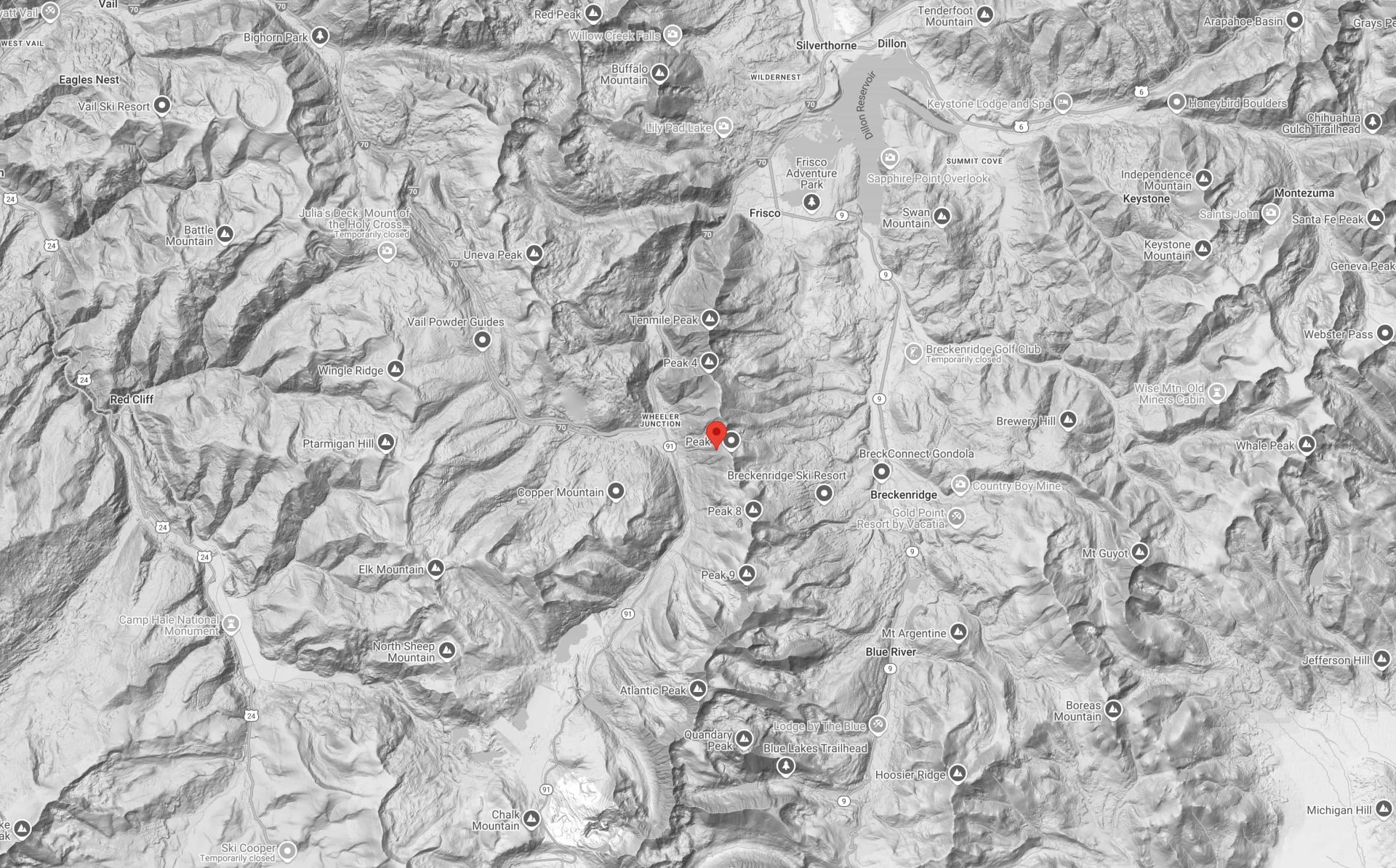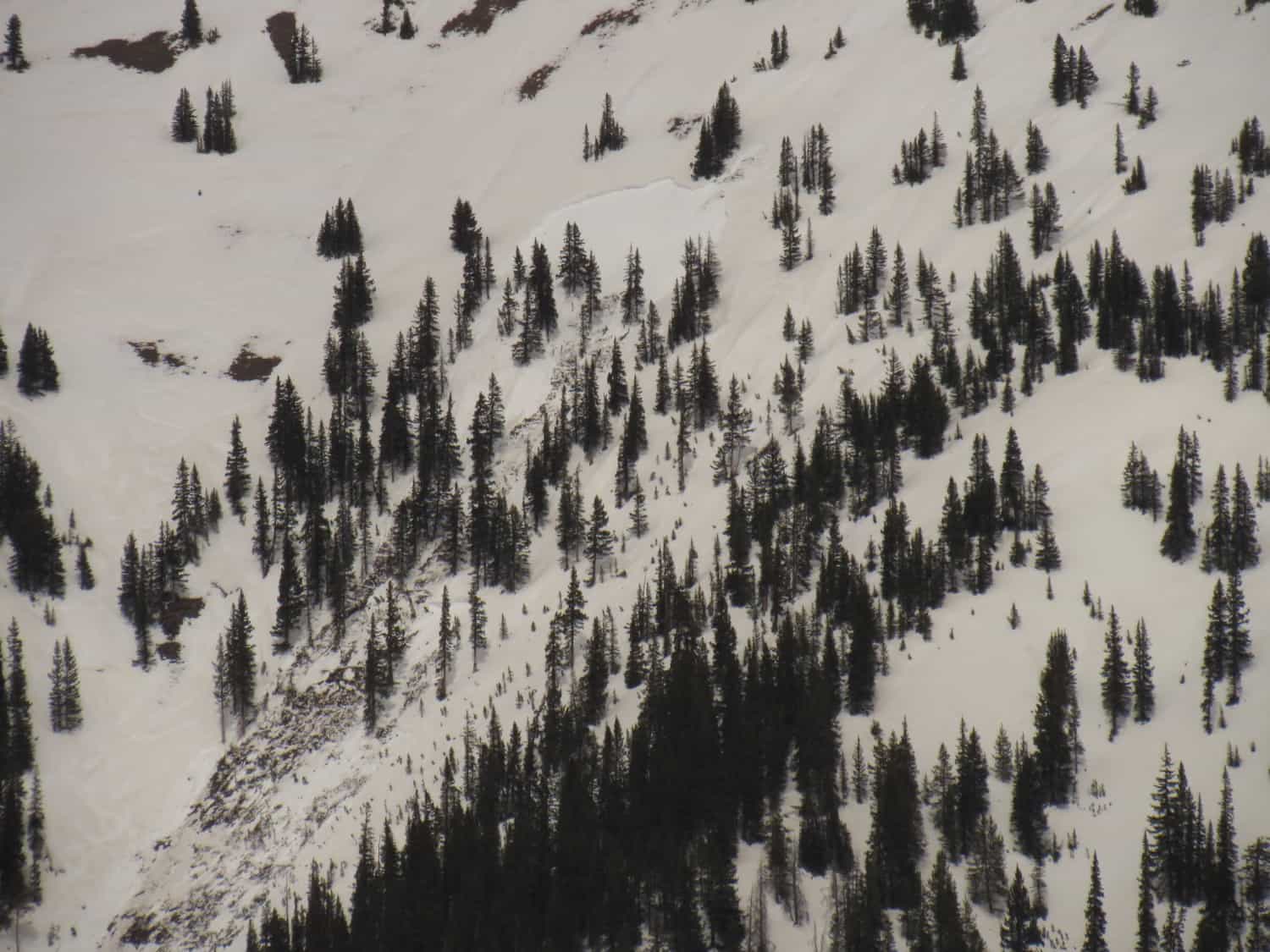
A skier was injured Saturday, April 12, after being swept over 1,100 vertical feet in a wet slab avalanche in the K Chute of the Sky Chutes, a well-known backcountry zone west of Breckenridge Ski Resort, Colorado.
According to reports on the Colorado Avalanche Information Center website, an initial group of four skiers departed from the Peak 6 backcountry access gate around 11:45 a.m., planning to descend the steep, west-facing K Chute. After discussing the day’s moderate avalanche forecast and confirming everyone carried rescue gear, the group hiked over mostly bare ground to the top of the chute. Snow conditions were described as crusty. Skier 1 stopped at a steeper section and radioed the group to regroup. Skier 2 proceeded first, making several turns before triggering an avalanche that broke above him and swept him out of sight.
Skier 1 immediately began a search, radioing Skier 3 to call 911 and using his avalanche transceiver. Within minutes, he spotted Skier 2 moving to the side of the still-moving debris. Skier 2, though injured and having lost both skis, was not buried. Skier 1 assisted him to bare ground, but the pair soon encountered deep, wet snow that made travel difficult. Remembering that Skier 2 had a spare set of skis in the parking area, Skier 1 retrieved them, allowing both to ski down to their vehicle. Skier 2 was transported to the hospital for treatment. Skier 3 later confirmed he had not called 911.
Around 2 p.m., two additional groups arrived at the top of K Chute from different approaches. Both observed a fresh avalanche crown at the entrance, approximately 100 feet wide and 3 to 4 feet high, with the slide running the entire length of the chute to the creek below. The crown indicated a wet slab avalanche that had broken to the ground, consistent with springtime instability.

The first of these groups, ascending from the Copper side, allowed another party of two to ski down before they entered. Both groups descended along the shallower skier’s left side above the debris, turning their avalanche beacons to search mode. No transceiver signals were detected, and both groups arrived safely at the bottom. They found two skis separated by about 400 yards in the debris field along the way. After confirming there were no signals, one skier called 911 to report the avalanche, as emergency services had not yet been notified.
Summit County Sheriff’s Office and Summit County Rescue Group began organizing a response but were soon informed by St. Anthony Summit Hospital that the injured skier was already receiving care. The skis recovered from the debris matched the description of those lost by Skier 2, confirming the connection between the groups and the earlier incident.

The avalanche rating for the day was moderate, or 2 out of 5 on the danger scale. The CAIC warned, “The most likely place to trigger an avalanche in wet snow is where dry snow is warming on open, sunny, and steep slopes, especially around rocks. Signs of increasing wet snow hazards include rollerballs or pinwheels, gloppy snow sticking to the bottom of your gear, or loose avalanches on other slopes. Cornice fall also presents a significant hazard. Avoid being underneath cornices, and give them a wide berth when traveling along ridgelines. To check wet snow issues, step out of your skis or board and off your machine or snowshoes to see how far your foot penetrates the wetting snow. If your foot sinks above the middle of your boot, stick to slopes less than 35 degrees. If your foot sinks in over the boot top, call it a day and leave the mountains. Get into and out of the mountains early to avoid wet snow avalanches.”
The Sky Chutes, visible from Interstate 70 and Copper Mountain, are notorious for their avalanche risk, especially during spring’s warming cycles. Wet slab avalanches, like the one triggered Saturday, occur when meltwater weakens the snowpack, often making travel hazardous as the day warms. Avalanche experts emphasize the importance of starting and ending backcountry outings early in spring, carrying proper rescue equipment, and always reporting avalanche incidents to local authorities—even if no one is buried.




